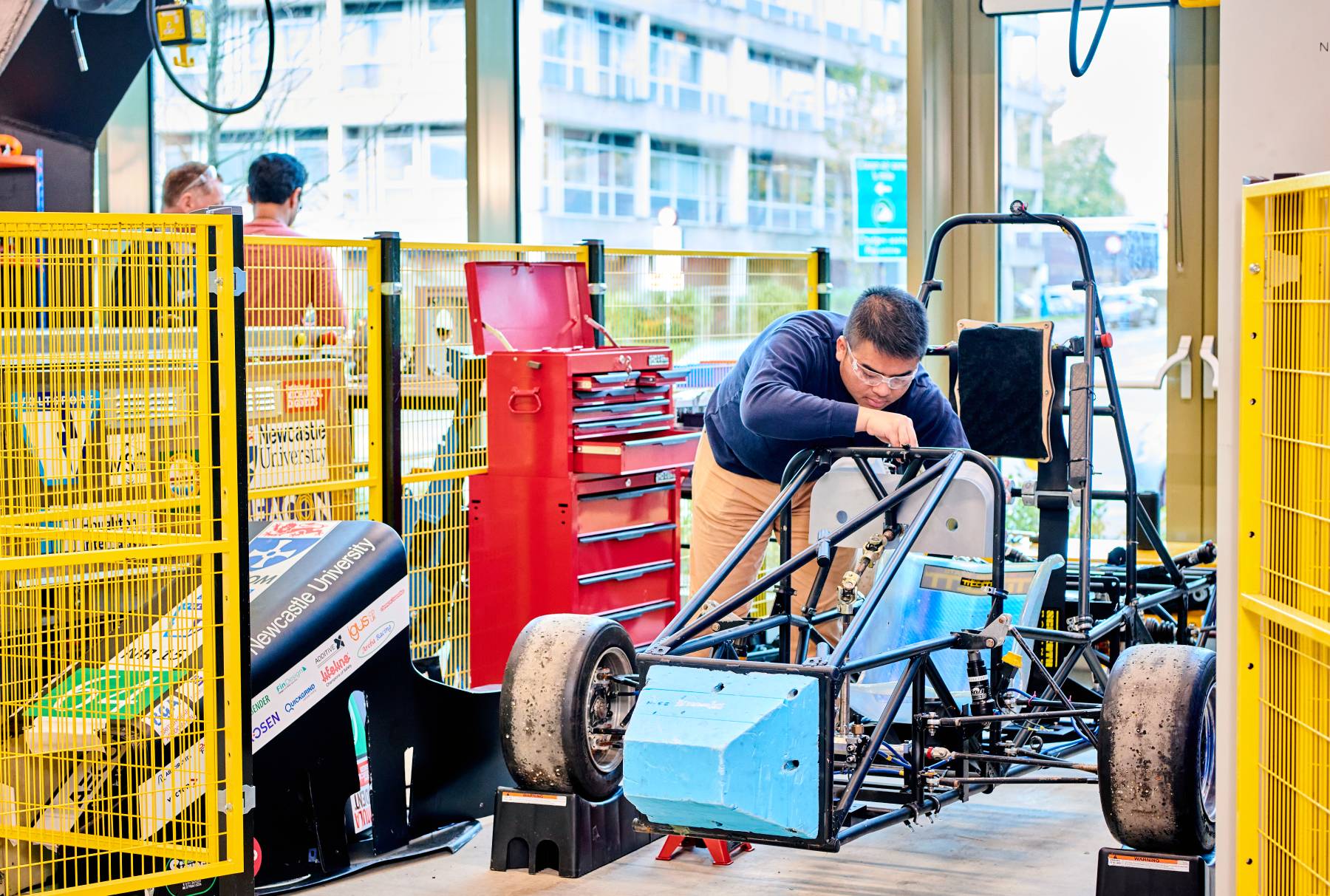CME8417
Light Activated Process Technologies - Photovoltaics and Photocatalytic Reactors
- Offered for Year: 2025/26
- Module Leader(s): Dr Fernando Russo Abegao
- Owning School: School of Engineering
- Teaching Location: Newcastle City Campus
Semesters
Your programme is made up of credits, the total differs on programme to programme.
| Semester 1 Credit Value: | 20 |
| ECTS Credits: | 10.0 |
Aims
This module will introduce students to the photovoltaics and heterogenous photocatalytic technologies available. This module will focus on photovoltaic technology, including cell and system operation, the range of applications currently addressed and implementation aspects both technical and non-technical. Photocatalytic materials physical and chemical principles will be covered, and photoreactor design will be explored.
Outline Of Syllabus
- Fundamental physics of light and electricity
- Photoelectric effect, junctions and photovoltaic cell
- Materials used for PV cells
- PV modules and system design, manufacture and performance
- Principles of heterogenous photocatalysis
- Photocatalytic materials
- Kinetics and charge effects, interplay between chemical and physical effects
- Photocatalysis applications
- Photoreactors: principles, design and operation
- Radiation sources and radiation fields
- Photocatalytic rate equations and mass transfer rates
- Photoreactor modelling and design
- Future development
Learning Outcomes
Intended Knowledge Outcomes
At the end of this module students will be expected to be able to:
- Judge PV materials in terms of band theory of solids, metals, non-metals and semiconductors, energy quantization
- Illustrate how the photoelectric effect, diodes and junctions operate in PV materials and the principles of electricity generation in PV cells and modules
- Produce designs for PV cells and modules and perform design and efficiency calculations
- Interpret PV effects and performance in monocrystalline and polycrystalline Si, thin films
- Estimate solar radiation availability and its variability
- Apply theoretical concepts and practical implementation associated with engineering systems and processes in renewable energy systems using PV
- Appreciate the potential of PV to contribute to renewable energy production and reductions in CO2
- Relate photocatalytic activity in semiconductor materials with material properties and compositions
- Assess the effect of kinetic and charge transfer phenomena in the photocatalytic performance, and predict interplay between such effects
- Specify photocatalytic materials to match applications requirements
- Produce a photoreactor specification and conceptual design, including selection of appropriate radiative sources, in line with the chemistries involved
- Devise photoreactor models and carry out photoreactor design calculations
- Appraise photocatalytic processes sustainability and the technology development horizon
Intended Skill Outcomes
Students will be able to:
- Engineer selection and integration of PV systems for industrial applications to provide sustainable energy to industrial processes
- Design of photocatalytic reactor systems for sustainable chemical conversation
Teaching Methods
Teaching Activities
| Category | Activity | Number | Length | Student Hours | Comment |
|---|---|---|---|---|---|
| Scheduled Learning And Teaching Activities | Lecture | 25 | 1:00 | 25:00 | Lectures |
| Scheduled Learning And Teaching Activities | Small group teaching | 8 | 1:00 | 8:00 | Tutorials |
| Structured Guided Learning | Lecture materials | 40 | 1:00 | 40:00 | Study of lecture notes and completion of online activities |
| Guided Independent Study | Directed research and reading | 50 | 1:00 | 50:00 | Engagement with reading list and research articles |
| Guided Independent Study | Assessment preparation and completion | 1 | 33:00 | 33:00 |
Revision for the exam |
| Guided Independent Study | Assessment preparation and completion | 1 | 2:00 | 2:00 |
Examination |
| Guided Independent Study | Assessment preparation and completion | 1 | 42:00 | 42:00 |
Group assignment preparation and completion |
| Total | 200:00 |
Teaching Rationale And Relationship
Lectures will be used to introduce the theory. The small group teaching sessions are supervised activities in which the students apply the knowledge that they gain during lectures. Structure study will provide students with opportunity to engage with research and state of the art of technology developments.
Assessment Methods
The format of resits will be determined by the Board of Examiners.
Exam Assessment
| Description | Length (mins) | Semester | When Set | Percentage | Comment |
|---|---|---|---|---|---|
| Written Examination 1 | 120 | 1 | A | 50 | Exam on photocatalysis and photoreactors |
Formative Assessment
| Description | Semester | When Set | Comment |
|---|---|---|---|
| Computer assessment 1 | 1 | M | Canvas quizzes with feedback throughout the module |
Other Assessment
| Component | Semester | When Set | Percentage | Comment |
|---|---|---|---|---|
| Report 1 | 2 | M | 50 | Technical group report on photovoltaic technologies. Approximately 2500 words. |
Assessment Rationale And Relationship
The technical group report provides an appropriate way to assess both theoretical understanding and practical problem solving skills. It also develops the ability to apply the broad base of scientific principles in conjunction with deeper knowledge and understanding in a specific subject area. The exam will test the students’ capacity to carry out elementary calculations and will test the theory knowledge and practical design skills awareness. Canvas quizzes will allow students to check knowledge formatively throughout the module.
Timetable
- Timetable Website: www.ncl.ac.uk/timetable/
